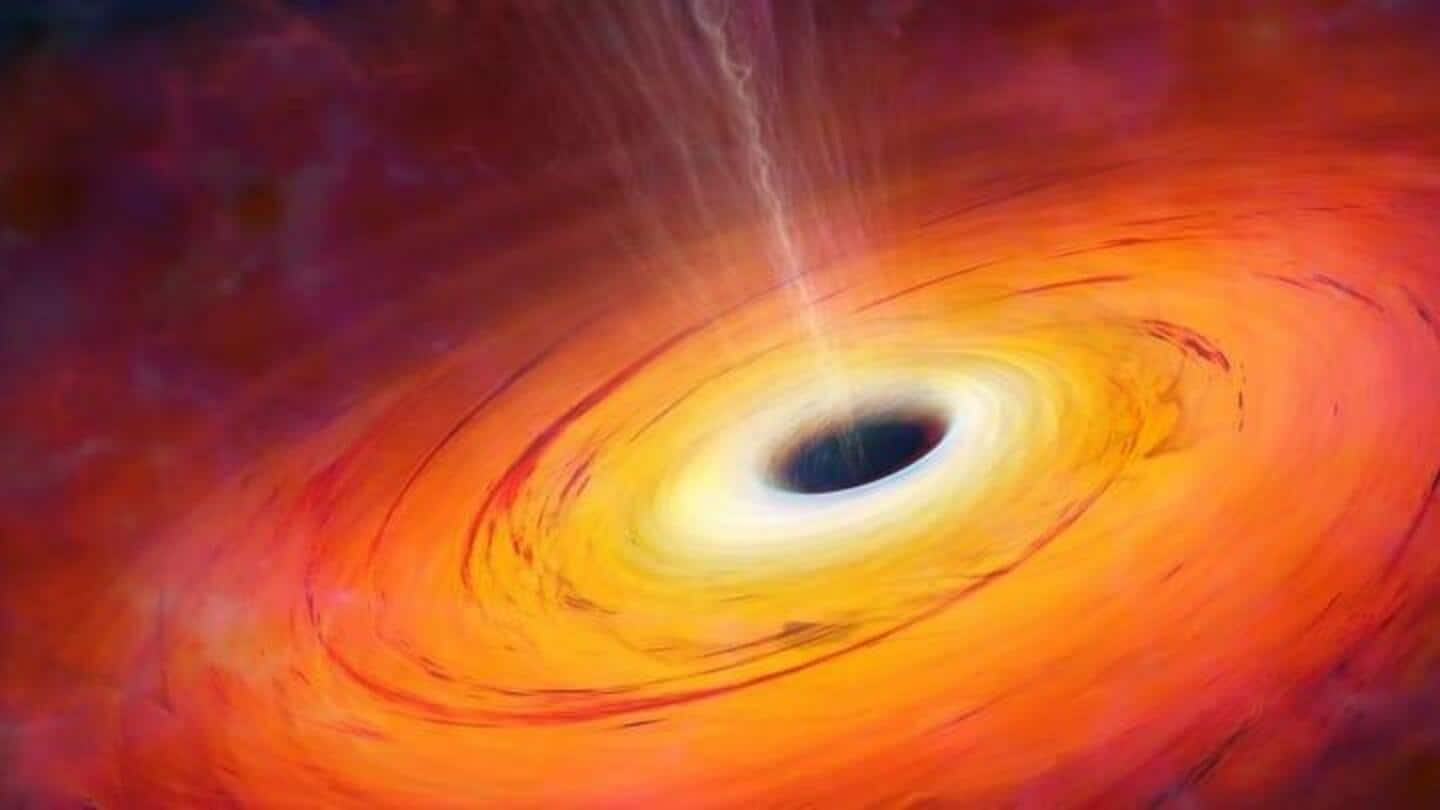
NASA's Chandra Observatory uncovers hundreds of previously hidden black holes
What's the story
Astronomers, with the aid of NASA's Chandra X-ray Observatory, have discovered around 400 black holes which were previously hidden or buried beneath layers of cosmic dust and gas. The newly-discovered black holes are of the supermassive type and are millions or even billions of times the Sun's mass. Such discoveries help in obtaining a more accurate count of black holes in the universe.
Context
Why does this story matter?
Black holes are among the most fascinating cosmic objects. Their gravitational forces are so strong that not even light can escape them. It is believed that giant black holes lie at the center of almost all large galaxies, including our Milky Way. While only some of these black holes actively draw in material that produces radiation, others are buried beneath dust and gas.
Details
Data from Chandra Source Catalog and SDSS aided this discovery
Astronomers identified these black holes using data from Chandra Source Catalog, a public archive comprising hundreds of thousands of X-ray sources detected by the Chandra observatory, and optical data from the Sloan Digital Sky Survey (SDSS). The newly-discovered black holes lie in galaxies that are not known to contain quasars, which are extremely luminous objects with rapidly growing supermassive black holes.
Explanation
What are XBONGs and how are they relevant?
For about 40 years now, scientists have known about galaxies that appear normal in optical light but bright in X-rays and these are referred to as XBONGs (X-ray bright optically normal galaxies). The light arises from stars and gas but does not have the distinctive characteristics of a quasar. Upon comparison of the X-ray data and optical data, researchers identified 817 XBONG candidates.
Discovery
The black holes lie 550 million-7.8 billion light-years away
Further investigation revealed that about half of these XBONGs represent a population of previously hidden black holes. Information from NASA's Wide-Field Infrared Survey Explorer served as a shred of additional evidence and confirmed that half of these XBONGs are buried, growing supermassive black holes. The newly-discovered black holes lie around 550 million and 7.8 billion light-years from Earth.
X-rays
X-rays can pass through cosmic dust and gas
X-rays, in particular, are useful to probe for rapidly growing black holes. This is because the material surrounding black holes is superheated to millions of degrees and glows strongly in X-ray wavelengths. While dense clouds of gas and dust surrounding a black hole will block most or all the light at optical wavelengths, X-rays can shoot past the intervening dusty layers more easily.
Information
The current study uncovered a missing population of black holes
"Astronomers have already identified huge numbers of black holes, but many remain elusive," said Dong-Woo Kim, who led the study. "Our research has uncovered a missing population and helped us understand how they are behaving."